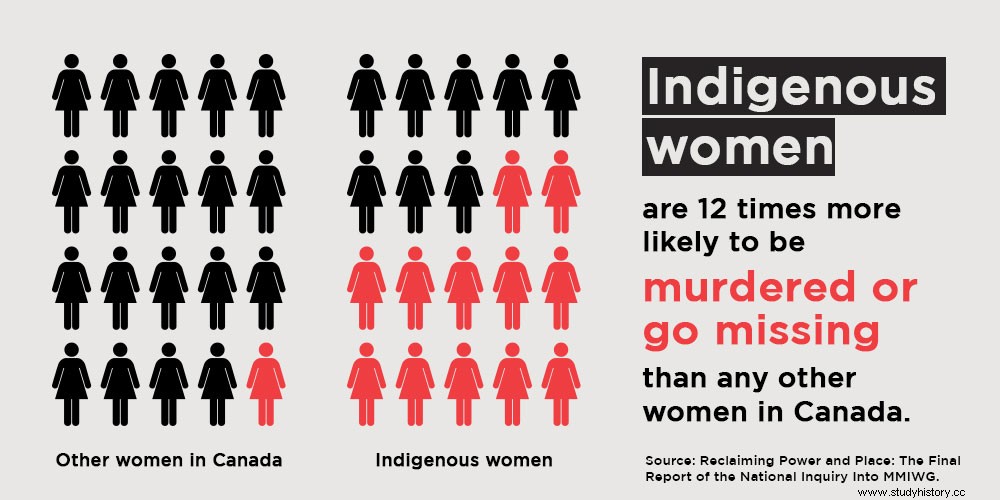
The colonialism of indigenous peoples in Canada has already affected them drastically, as there were attempts to erase their culture and history. The growing number of indigenous peoples disappearing in recent years has attracted attention in another attempt to wipe out the indigenous people. It is no coincidence that women in Indigenous society are disappearing in a country notorious for its history of harming this population. Efforts must be made to assess why this population is constantly being targeted, even after centuries of destruction.
Colonialism:The Harm of Indigenous Peoples as a Result
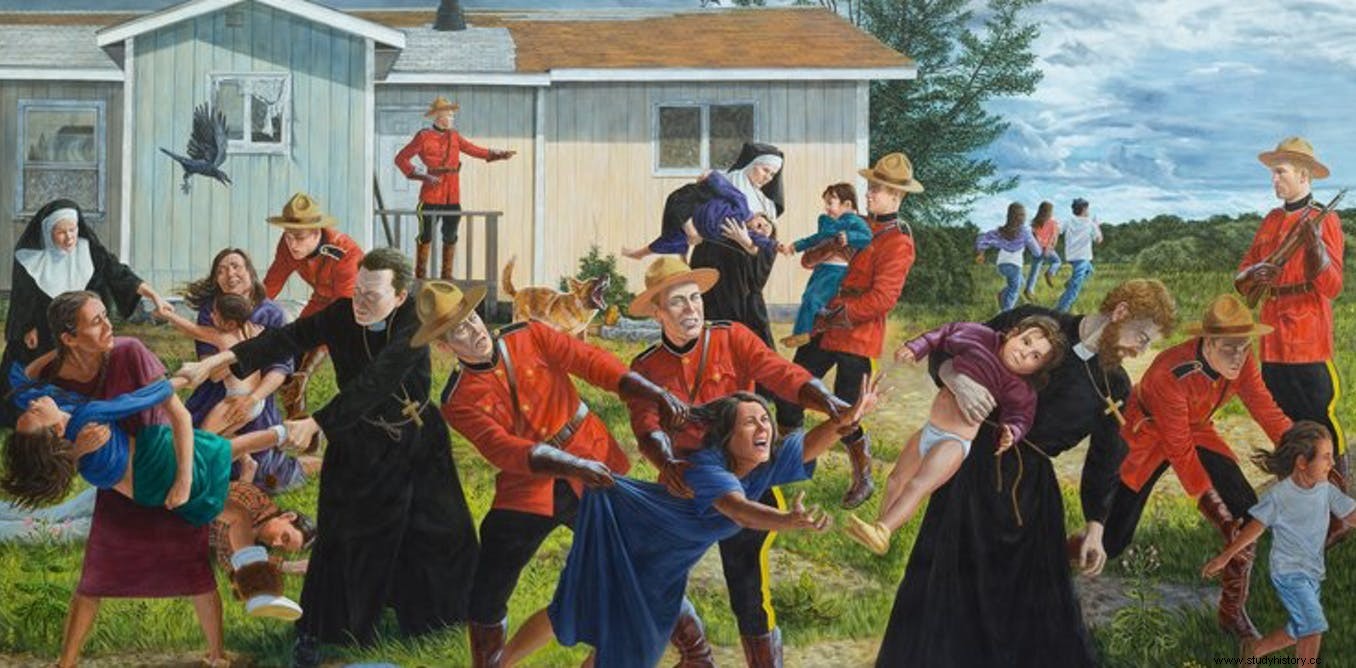
The marginalization of Indigenous peoples can be traced back to the beginning of the occurrence of colonization in Canada. The indigenous peoples' opposition to colonization led to overt blunders and dehumanization of the people. Indigenous peoples were seen as:
"Squaws" - dirty, rude, uncivilized and sexually abusive. Both of these characterizations described Aboriginal women as "sexually accessible", which served to remove responsibility from men who forced sex on Aboriginal women.
With colonizers giving the impression that this group of women were easy to have sexual intercourse without consent, many women ended up with horrific sexual acts of violence. This would only be the beginning of the abuse of indigenous peoples. The combined acts of racism and sexism that began as a result of colonialism would continue to affect the indigenous peoples of Canada today.
After the fur trade:1850 - 1950
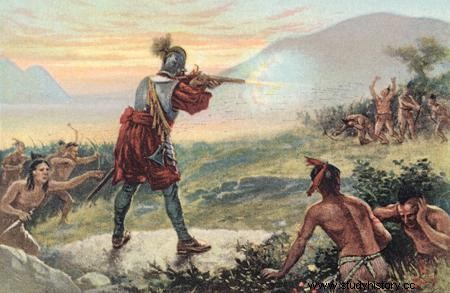
After the Fur Trade:First Nations Women in Canadian History, 1850 - 1950 by Janice Forsyth, Associate Professor of Sociology and Director of the Program for Indigenous Studies at Western University, highlights the differences between indigenous peoples in Canada. She was inspired to write this article after noticing that there is not much to be found in accordance with the indigenous history of Canada. Forsyth draws attention to three dominant themes:female sexuality, the impact of colonization on First Nations women, and homeschooling experiences.
Indigenous peoples and female sexuality
When asked why indigenous peoples became hyper-sexualized, one must focus on their opposites, white women. For white women to survive in a colonial society, the image of indigenous women had to be destroyed. This is where:
the image of the dirty and immoral "squaw" was often used to create moral panic about the white race doom and to justify strict measures that would keep Indian women in reserve and preferably at home. (Forsyth, 2005)
It has been revealed that the hypersexualization of indigenous peoples was also used as a means of control. By regarding indigenous peoples as very promiscuous, government officials were able to limit the areas that this population would be able to cross. The use of this concept would be:
a central rationale for this system was to prevent Indian women from entering the towns and villages and to disrupt the moral decency of white society by prostituting themselves (Carter 1998, 187).
Despite the knowledge of sexual violence, many of these women suffered, in addition to conditions such as poverty and disease, which caused them to be isolated and portrayed as monsters in the very country they own. This only proves the length the government was willing to go through to prove its authority.
The church played a huge role in the sexuality of indigenous peoples. In order to 'tame' the women, they had to convince them that they did not follow the traditional female ideals that other populations of women followed. It should be made clear that indigenous peoples only belong in the household and must embrace the matriarchy. Jean Barman stated that in order for this to succeed:
these powerful negative images gave both the church and the state the opportunity to penetrate the personal affairs of Indian women and reorganize their lives along patriarchal lines. According to Barman, the key to the whole process lay in taming their sexual freedom of action, not their sexuality itself. For the restructuring to be successful, missionaries, officials, and Indian men had to convince Indian women of their evil nature and redirect energy to the home.
Indigenous peoples were forced to accept patriarchal ideals in order to avoid further harm to the population. The colonization of their country would later cause them to succumb to the suppression of their traditional values.
The consequences of colonization on indigenous peoples
It must be borne in mind that the indigenous people's idea of a female agency varies from Eurocentric values. Colonizers saw indigenous peoples as "victims" of a wild lifestyle that has little or no power and authority in their own households or communities "(Carter, 1996). Reality is very different from what European travelers looked at. Terms such as" division of labor and female control over their own sexuality ", (Weist, 1983) was seen as deviant and outrageous in the lens of early Europeans. had.
Residential schools
The end of the 19th century would bring trauma to the native children of Canada, as many were forced to go to residential schools. These schools were schools to help indigenous peoples, and were a front for obvious abuses against indigenous peoples. Indigenous girls had to endure violence from school officials, eventually dehumanizing them and continuing the cycle of trauma.
In 1884, an amendment was made to Indian law making it compulsory for all indigenous peoples under the age of 16 to be placed in residential schools. Indigenous peoples were involuntarily separated from their families. Many of the parents who had taken their children from them were single indigenous peoples, whom Indian agents considered unfit to take care of children. The action with housing schools eventually hurt indigenous peoples, who were traditionally caregivers for children, which was a very respected role in indigenous culture.
The role of residential schools in Canada was to neglect and treat indigenous peoples as less than human beings in the hope of erasing the identity of their indigenous peoples. Native girls suffered as a result:
An example of this was shown in a report sent to the government by Crowfoot School by Nurse Ramage, which stated:“She later returned to the dining room to examine one of the girls who was reported to be badly marked by the strap. Several marks were found on her lower limb. Five girls were in chains. This violent punishment was carried out because these girls had committed the "crime" by speaking their language to the younger children who had not yet learned much English. So in hopes of comforting the young, rescued children, they had dared to speak their "willing tongue," and they had paid dearly for it.
(Robertson, 2018)
This is just one of many horrific experiences of indigenous girls in residential schools. It was expected that girls would take on housework, such as cooking and cleaning, instead of learning. One must remember that these institutions were very religious, forcing the idea that women must remain "colorless". As a result, when girls were sexually abused by school officials, the young girls became full of:
enormous fear of the act, as they thought they were now sinners for having participated in such an act ... There are even reports of virginity testing that took place in schools as these institutions were extremely religious and a woman's value to the man was to be determined on her virginity. The test was performed by a school principal, and they wanted to insert a small instrument into the girls' vagina to check if the hymen was still intact. If it was not there, they would be beaten and shamed by the entire school population for their impurity.
(Robertson, 2018)
After the generational trauma of indigenous peoples was continuously discontinued in the work of washing away culture, the indigenous people have continued to suffer under colonialism and patriarchy. Unfortunately, the last housing school in Canada closed as late as 1996, emphasizing that indigenous peoples today still have to endure the pain.
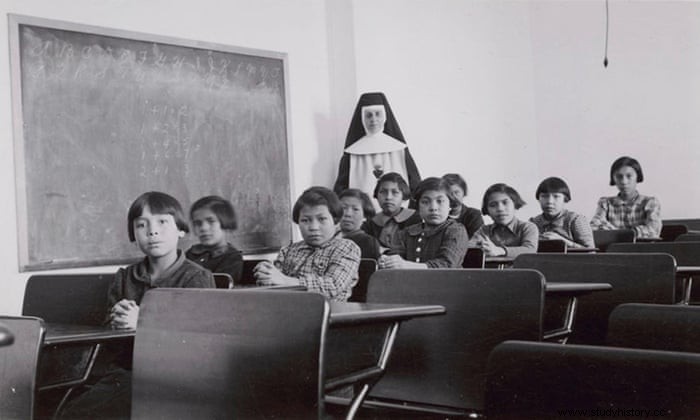
A growing epidemic
Indigenous peoples continue to face the intertwined oppression of racism and misogyny, as well as the effects of colonialism today, as many indigenous peoples disappear. Indigenous peoples are more exposed to gender-based violence as a result. This is one of the biggest human rights crises in Canada.
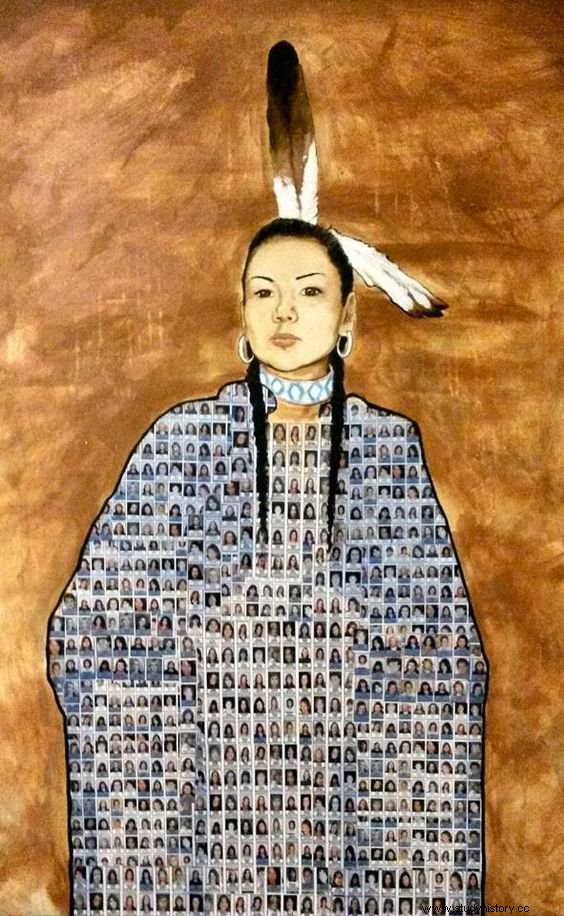
Demographics
There is confusion about the number of missing and killed indigenous peoples in Canada. This is due to "under-reporting of violence against indigenous peoples and girls and the lack of an effective database, as well as the lack of identification of such cases by ethnicity" (Brant, 2017). Unfortunately, indigenous groups estimate that this number is well over 4,000 missing and killed indigenous peoples.
Native Women's Association of Canada (NWAC) reports at:
- Most cases concern young women and girls. Just over half of the cases (55%) concern women and girls under the age of 31, with 17% of women and girls aged 18 or younger. Only 8% of cases concern women over the age of 45.
- Almost half of the homicide cases in NWAC's database remain unresolved. NWAC has found that only 53% of murder cases involving Aboriginal women and girls have led to murder charges. This is dramatically different from the national clearance rate for homicides in Canada, which was last reported at 84% (Statistics Canada 2005, p.10). Although a small number of cases in NWAC's database have been "cleared" by the suicide bomber or charges other than murder, 40% of the murder cases remain unresolved.
- Aboriginal women are almost three times more likely to be killed by a stranger than non-Aboriginal women . Of the homicide cases in NWAC's database where someone is charged,
- 16.5% of offenders are strangers with no previous connection to the woman or girl (Statistics Canada, on the other hand, reports that between 1997 and 2004, percent of murdered non-Aboriginal women were killed by strangers);
- 17% of offenders are acquaintances of the woman or girl (a friend, neighbor or someone else known to her); and
- 23% are a current or former partner for the woman or girl.
It is clear that indigenous women face disproportionate fatalities as a result. Without a proper database to record how many of these women disappear, the indigenous people continue to suffer in pain and wonder where their women have gone.
Violence against indigenous peoples:the cases of Helen Betty Osborne and Felicia Solomon
The murders of Helen Betty Osborne and Felicia Soloman are two cases that have devastated the indigenous people of Canada. Although their cases are separate, it should be noted that Osborne was Salomon's older cousin. As seen from these examples, violence against indigenous peoples, women and girls, has clearly damaged families.
Helen Betty Osborne
Helen Betty Osborne, born in Norway, Manitoba, was a 19-year-old woman with ambitions to become a teacher. She attended Margaret Barbour Collegiate in The Pas, Manitoba to reach her goal. Unfortunately, Obsorne was abducted on the morning of November 13, 1971, and was brutally murdered by four men. She was stabbed more than 50 times with a screwdriver, and her body was left at Clear Water Lake, north of The Pas.
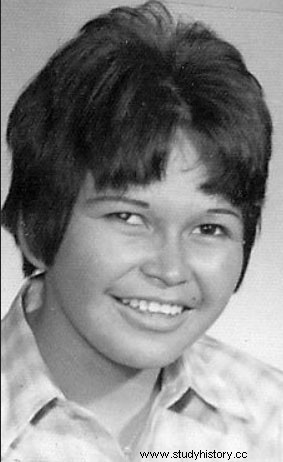
The Obsorne was not quick to receive justice, and still has not received the right justice for the loss of life. Although the four men involved, Dwayne Archie Johnston, James Robert Paul Houghton, Lee Scott Colgan and Norman Bernard Manger, were charged in December 1987 (about 16 years after the murder), only Johnston was convicted of murder. While looking at the motivation behind the murder:
The Aboriginal Justice Implementation Commission found that the main factors in the case were racism, sexism and indifference.
"In the findings of the Aboriginal Justice Inquiry, Helen Betty Osborne would not have been killed if it had not been for the color of her skin," [Eric] Robinson said.
(Malone, 2016)
Osborne's killings highlight how difficult it is for indigenous peoples to get justice in Canada. Without the indigenous people pushing for an investigation, the suspects would not have been held accountable for their horrific actions against her. There was a lack of concern among the legal authorities to resolve this issue.
Felicia Soloman
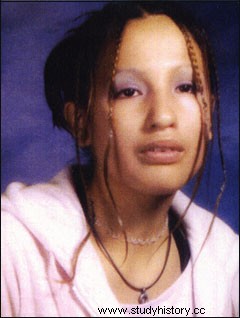
Felicia Velvet Soloman (16) was a Class 10 student attending RB Russell Collegiate in Winnipeg, Manitoba. She disappeared on March 25, 2003. Two months after she disappeared, in June 2003, some of her body parts were found in the Red River. Justice also failed Soloman. Felicia's mother noted that:
The police did not release a press release about Felicia's disappearance until six weeks after the accepted missing persons report. The first press release had an incorrect date for when she disappeared and identified her as a vulnerable child.
[Her family reports] that Felicia had expressed concern about a vehicle following her when she went to school, the same school that Tina went to.
(Mak, 2019)
Soloman's killer has not been found to this day. Nor would this be the last time the tragedy hit her family, with cousin Claudette Priscilla June Osborne, disappearing in Winnipeg on July 25, 2008. What happened to Claudette is not yet known.
Solutions
To prevent further violence against indigenous peoples and girls in Canada, a federal response must be developed with the help of indigenous peoples. According to Amnesty International Canada, to end brutality against indigenous peoples and girls:
A national public inquiry to missing and killed indigenous peoples focused on exposing the nature of this violence and on ensuring the responsibility of government and police for an effective and coordinated response.
A national action plan to stop violence against women that addresses the root causes of violence and identifies holistic, culturally appropriate ways to prevent and support those affected by violence.
Regular, comprehensive data collection on violence against indigenous peoples in official crime statistics.
(Amnesty International Canada)
Indigenous peoples do not deserve to suffer violence as a result of centuries of colonialism, misogyny and racism. Their suffering must be taken more seriously by the criminal justice system and the federal government for not having more stolen sisters. May the calls for action from the indigenous people be heard and implemented.
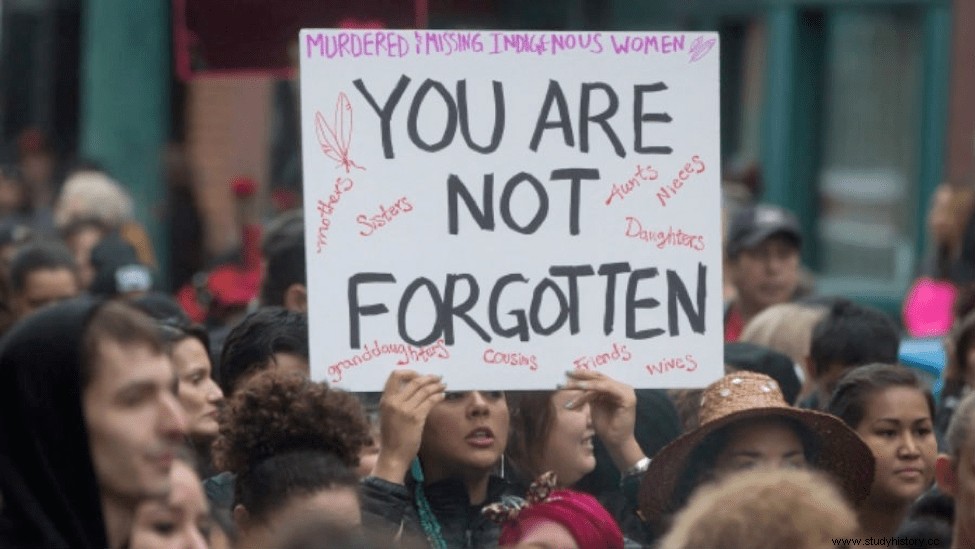
References
Brant, J. (2017, March 22). Missed and killed indigenous peoples and girls in Canada . The Canadian Encyclopedia. https://www.thecanadianencyclopedia.ca/en/article/missing-and-murdered-indigenous-women-and-girls-in-canada
CBC. (nd). Felicia Velvet Solomon . CBC News:Missing &Murdered:The Uolved Cases of Indigenous Women and Girls. Retrieved June 21, 2021 from https://www.cbc.ca/missingandmurdered/mmiw/profiles/felicia-velvet-solomon
Claudette Priscilla June Osborne . (nd). CBC News:Missing &Murdered:The Uolved Cases of Indigenous Women and Girls. Retrieved June 21, 2021 from https://www.cbc.ca/missingandmurdered/mmiw/profiles/claudette-priscilla-june-osborne
Felicia Solomon, unsolved murder from Manitoba in 2003. (2019, October 10). Justice for Indigenous Peoples. http://www.justicefornativewomen.com/2019/10/felicia-solomon-unsolved-murder-from.html
Forsyth, J. (2005). After the fur trade:First Nations Women in Canadian History, 1850 - 1950. Atlantis , 29 (2), 69–78. https://journals.msvu.ca/index.php/atlantis/article/view/1051
Malone, K. (2016, November 13). The 45th anniversary of the murder of Helen Betty Osborne shows "work is never done." CBC. https://www.cbc.ca/news/canada/manitoba/45-year-anniversary-of-helen-betty-osborne-s-murder-shows-work-is-never-done-1.3849427
Native Women's Association of Canada. (2019, July 24). Fact Sheet - Missing and Killed Aboriginal Women and Girls • Native Women's Association of Canada . https://www.nwac.ca/resource/fact-sheet-missing-and-murdered-aboriginal-women-and-girls/
Robertson, K. (2018). Indigenous women's experiences with the Canadian housing school system. Journal of Multidisciplinary Research at Trent , 1 (1), 45–54. https://ojs.praatu.ca/ojs/index.php/jmrt/article/view/276
Solutions . (2018, May 11). Amnesty International Canada. https://www.amnesty.ca/our-work/campaigns/no-more-stolen-sisters/solutions
